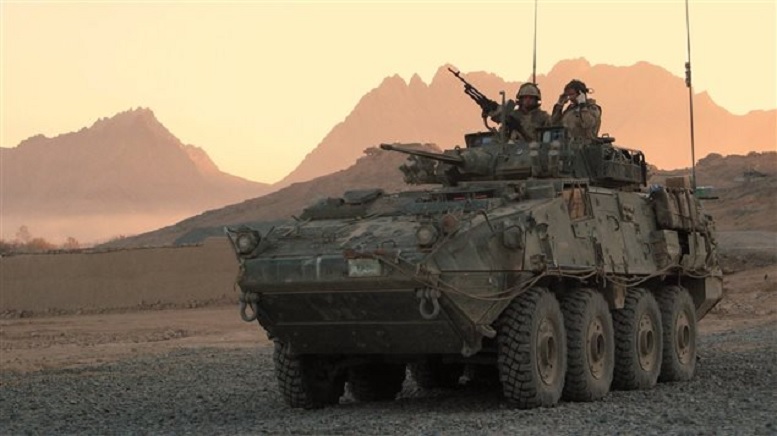Your hosts, Lynn, Marie-Claude, Levon, and Marc (video of show at bottom)
Listen(book) Op Medusa- the furious battle that saved Afghanistan from the Taliban

A Canadian LAV (light armoured vehicle) arrives to escort a convoy at a forward operating base near Panjwaii, Afghanistan at sunrise on Nov.26, 2006. after OP Medusa had pushed the Taliban out. in September. Photo: Bill Graveland- CP
It was Canada’s biggest battle since WWII and Korea. Canadian Major-General David Fraser (now retired) was the commander in charge of Nato troops in the so-called “southern area” of Afghanistan largely patrolled by thinly stretched Canadian Forces. It was also the “hottest” area of conflict.
In 2006, word came that the Taliban were planning their biggest attack ever to force the Canadians out and take the major city of Kandahar. Fraser has just released a new book on this pivotal battle to stop the Taliban from attaining their goal.
MGen (ret’d) David Fraser was our guest in studio. The excerpt is part of a longer conversation available on the website.
Allergies and climate change

About 30 per cent of Canadians suffer from seasonal allergies. (iStock)
Finally some semblance of spring has arrived in much of southern Canada and with it blossoms and buds from flowers and trees. Of course that means pollen in the air. For allergy sufferers, spring is a mixed blessing with sniffles, sneezes, watery eyes and itching spoiling the return to nicer weather.
Now comes news that climate change, and a warming with higher CO2 levels is making the plants produce even more pollen than in the past. It also means other plants are moving in to areas where they haven’t been seen previously, bringing their pollen with them
Lynn spoke with Dr. Mariam Hanna, an allergy specialist and professor at McMaster University in Ontario. who says they’re seeing more allergy sufferers than ever.
Arctic park runs igloo building workshop

Elijah Panipakoochoo, one of Inuit elders who led an igloo building workshop, peeks out of an igloo. Igloo means “snow shelter” in Inuktitut. (Parks Canada)
It is one of the iconic symbols of the Arctic, the “igloo”. The domed shelters made of blocks cut from solidly packed snow.
For eons these structures have protected Inuit from the bitterly harsh winter storms in the far north. Although Inuit now live in communities in solid houses, the igloo remains an important part of their culture and can still be a life-saver for hunters caught out on the land or the frozen sea ice.
It’s not easy to build an igloo though, it takes knowledge and understanding. That was handed down from generation to generation, at least until recent decades.
Carey Elverum, manager of the Sirmilik National Park, one of Canada’s largest and northernmost national parks located in northeastern Baffin Island in Nunavut recently organised an igloo building workshop in Pond Inlet in the high Arctic to pass along the skills and help young Inuit reconnect with an important aspect of their culture and heritage.
Listen to an excerpt of Levon’s conversation with Carey Elverum.
Video of the show
Images of the week







For reasons beyond our control, and for an undetermined period of time, our comment section is now closed. However, our social networks remain open to your contributions.